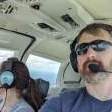Sealing the slip fit exhaust joint?
-
Members Online
- EricJ
- Zippy_Bird
- carusoam
- McMooney
- kowabunga
- winglers
- Evelyn Craik
- GeeBee
- Beechbum
- Fly Boomer
- RescueMunchkin
- Mac80
- Mooney-Shiner
- alextstone
- Willpool101
- ELysek1
- LANCECASPER
- Brian E.
- Niko182
- PT20J
- 7.Mooney.Driver.0
- atpdave
- mmcdaniel33
- FlyingDude
- Shadrach
- Justin Schmidt
- phrogpilot73
- 1967 427
- dkkim73
- Jay G
- ottorecker
- PeteMc
- ta2too
- FLYFST
- NickG
- shwn1226
- marcusku
- Jake@BevanAviation
- JModelDave
- ArtVandelay
- ResumeNormalSpeed83
- oregon87
- eman1200


Recommended Posts
Join the conversation
You can post now and register later. If you have an account, sign in now to post with your account.